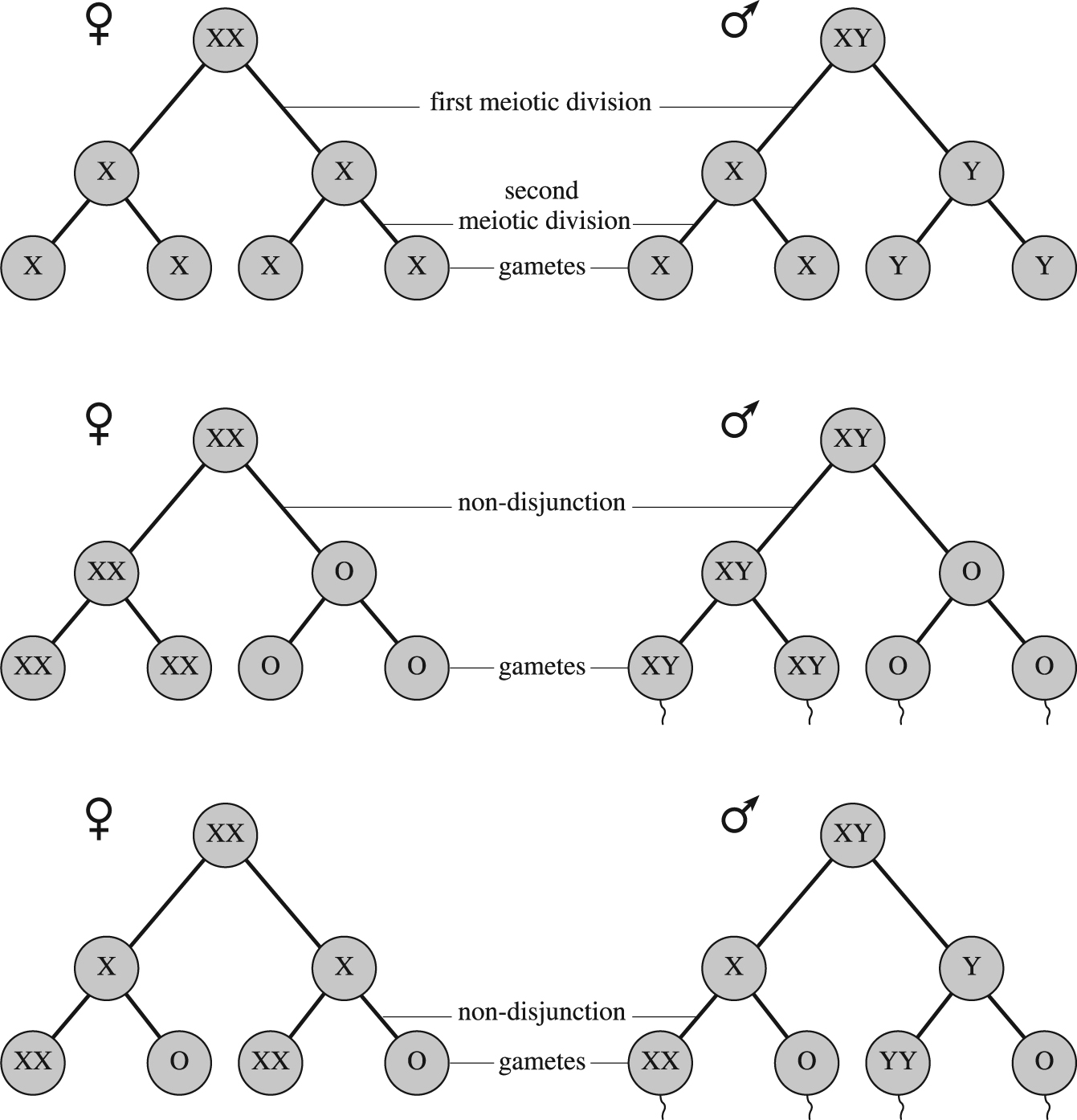A reduction division that is the form of cell division that only occurs in the testis (see TESTICLE) and the ovary (see OVARIES) – giving rise to the germ cells (gametes) of the sperms (see SPERMATOZOON) and the ova (see OVUM).
Ova produced by normal meiosis have 22 autosomes and an X sex chromosome. However, two types of sperm cells are produced: one contains 22 autosomes and a Y sex chromosome (see SEX CHROMOSOMES); the other, 22 autosomes and an X sex chromosome.
Two divisions of the NUCLEUS occur (CELLS) and only one division of the chromosomes, so that the number of chromosomes in the ova and sperms is half that of the somatic cells. Each chromosome pair divides so that the gametes receive only one member of each pair. The number of chromosomes is restored to full complement at fertilisation so that the zygote has a complete set, each chromosome from the nucleus of the sperm pairing up with its corresponding partner from the ovum.
The first stage of meiosis involves the pairing of homologous chromosomes which join together and synapse lengthwise. The chromosomes then become doubled by splitting along their length and the chromatids so formed are held together by centromeres. As the homologous chromosomes – one of which has come from the mother, and the other from the father – are lying together, genetic interchange can take place between the chromatids and in this way new combinations of GENES arise. All four chromatids are closely interwoven, and recombination may take place between any maternal or any paternal chromatids. This process is known as crossing over or recombination. After this period of interchange, homologous chromosomes move apart, one to each pole of the nucleus. The cell then divides and the nucleus of each new cell now contains 23 and not 46 chromosomes. The second meiotic division then occurs, the centromeres divide and the chromatids move apart to opposite poles of the nucleus so there are still 23 chromosomes in each of the daughter nuclei so formed. The cell divides again so that there are four gametes, each containing a half number (haploid) set of chromosomes. However, owing to the recombination or crossing over, the genetic material is not identical with either parent or with other spermatozoa.

The formation of gametes. Top, normal meiosis. Centre, non-disjunction at first meiotic division. Bottom, non-disjunction at second meiotic division.